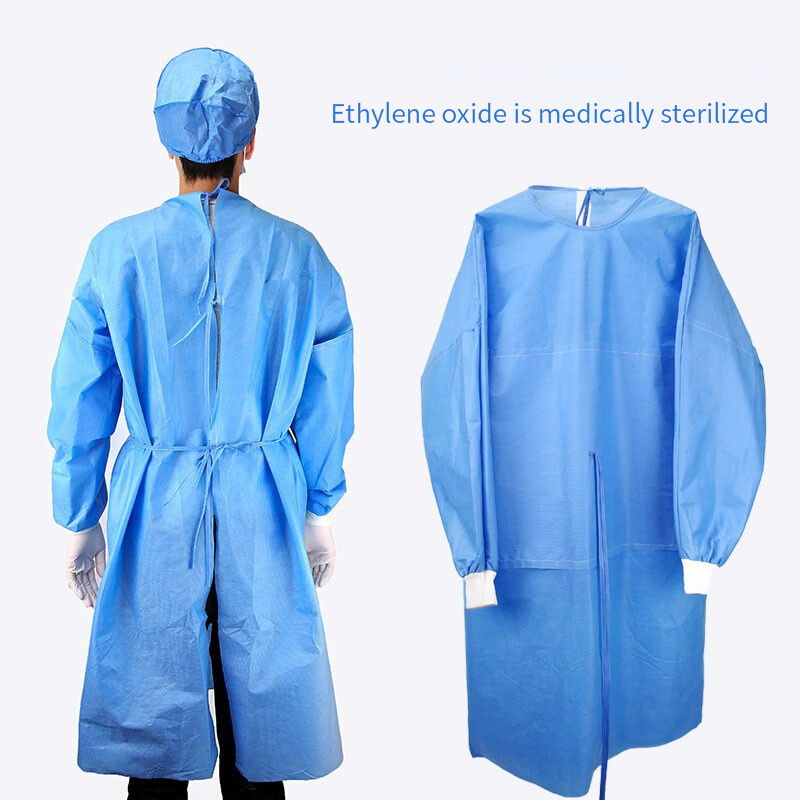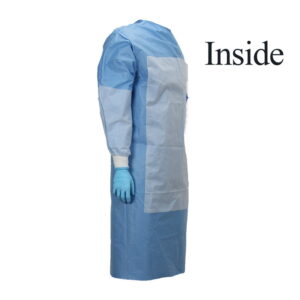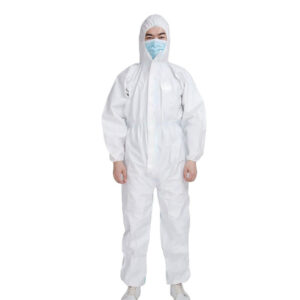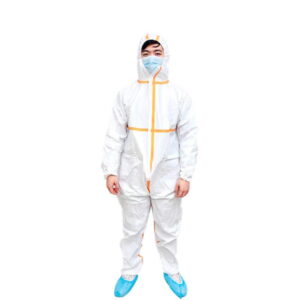Surgical Gowns
Disposable Surgical Gowns are medical clothing worn by healthcare professionals during surgical procedures to prevent the transmission of infection or disease. They are typically made of nonwoven materials, such as spunbond-meltblown-spunbond (SMS) fabric, or other fluid-resistant materials.
Common specifications for surgical gowns include the level of protection (e.g., AAMI Level 1-4), size, and length (e.g., full-length or half-length).
Applications: Surgical gowns are used in medical settings, including hospitals, surgical centers, and clinics, during surgical procedures to prevent the transmission of infection or disease between patients and healthcare professionals.
Additional information
Product Details:
Advantages:
a. Protection: Surgical gowns provide a barrier to prevent the transmission of infection or disease during surgical procedures.
b. Comfort: High-quality surgical gowns are designed to be comfortable for healthcare professionals to wear during long procedures.
c. Breathability: Some surgical gowns are designed to be breathable to prevent overheating during surgical procedures.
d. Durability: Surgical gowns are typically designed to withstand repeated use and laundering.
e. Compliance: Many surgical gowns are designed to meet industry standards, such as AAMI standards, ensuring they provide adequate protection for healthcare professionals.

Choosing Comfort in Surgical Gowns: The Crucial Role of Breathability
Considerations in Surgical Gown Selection:
When selecting surgical gowns, the consideration of their performance should be coupled with a focus on product breathability and comfort. The increased comfort of surgical gowns enhances the ability of surgeons and other medical personnel in the operating room to perform procedures more effectively, thereby improving surgical efficiency and reducing the risk of procedural errors.
Classification of Surgical Gowns:
Surgical gowns are now classified as Class II medical devices, collectively known as “soft instruments” (surgical gowns, surgical drapes, etc.). These fall under the category of infection control Class II medical devices, characterized by wearability, foldability, water resistance, bacterial resistance, breathability, lint resistance, antistatic properties, reusability, and dual-directional protection, excluding common medical textiles.
Material Choice and Breathability:
Polyester fiber is commonly used in modern surgical gowns, being a synthetic fiber. While it lacks the breathability of cotton, measures are taken to ensure comfort. In accordance with YY/T 0506.8—2019 “Surgical Gowns, Surgical Drapes, and Clean Air Suits for Patients, Clinical Staff, and Equipment – Part 8: Specific Requirements for Products,” breathable long-fiber polyester is employed in non-critical areas to guarantee comfort.
Breathability in Critical and Non-Critical Areas:
High-performance surgical gowns distinguish between critical and non-critical areas. Critical areas utilize a three-layer composite material for enhanced protection but with relatively reduced breathability. To prioritize comfort, non-critical areas employ a single-layer material with superior breathability, particularly long-fiber polyester.
Seam Seal Integrity and Comfort Balance:
In critical areas, where seam seal integrity is paramount for enhanced protection, breathability may be compromised. Therefore, the overall breathability and comfort of surgical gowns heavily rely on the characteristics of non-critical areas.
In summary, the breathability of surgical gowns is of utmost importance, with non-critical areas playing a significant role in ensuring comfort during medical procedures.









